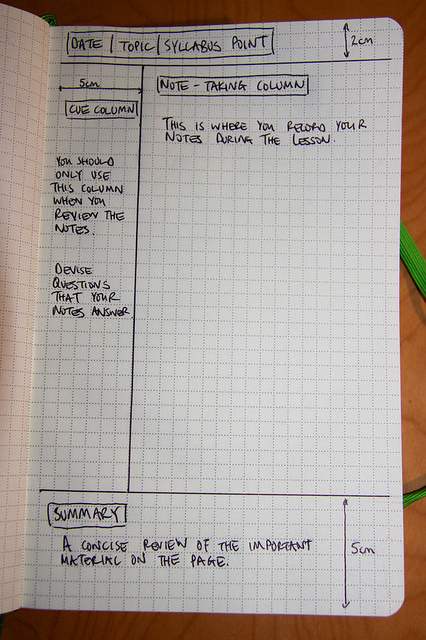Olio #16: Cornell Notes
 I can’t be the only person who didn’t know about The Cornell Note-taking System in school, so named because it was developed by a professor at Cornell University, back in the 1950s. A while back I had looked up different kinds of organizer paper and found some that were labeled this. Why were the lines that way, I wondered? How was it used? I found out, and for those of you equally in the dark, I will share my findings.
I can’t be the only person who didn’t know about The Cornell Note-taking System in school, so named because it was developed by a professor at Cornell University, back in the 1950s. A while back I had looked up different kinds of organizer paper and found some that were labeled this. Why were the lines that way, I wondered? How was it used? I found out, and for those of you equally in the dark, I will share my findings.

Cornell University Library. Photo: Cornell University, taken c. 1865-1885. Creative Commons Attribution 2.0 Generic (CC BY 2.0)
Where better to learn than from Cornell itself? But since I didn’t go there, and it’s too far to casually visit, their website and other websites had to suffice for my research.
What is it?
First of all, the note-taking page is set up in a specific way. There is a wide left column for questions, keywords, or cues. The wider right column is where the main notes are taken. At the bottom of the page, there is an area to summarize the notes taken on that page.
Step One:
When you’re taking notes in class or from another source, take notes on the right side of the page. Don’t use complete sentences, and abbreviate what you can. Write down the key ideas, and pay special attention to things written on the blackboard, if you are using this for school.
Step Two:
Soon after you are finished taking notes, on the left side of the page write questions, keywords, main ideas, or cues to remind you about the notes. This will reinforce the learning in your mind, and help you make it all clear, connecting related bits of information. It is also a good opportunity to see if you have any questions about the material yourself.
Step Three:
Within the next day, on the bottom of the page summarize the material in the notes column. This can help you see how all the information fits together.
What is it for?
This is a good format for visiting and revisiting your notes, to understand all of the material. It is also useful for quizzing yourself on the information, since you can easily cover up the notes and only display the questions and cues. Additionally, since you will have already gleaned the relationships and important information, you don’t have to weed through the full set of notes each time you study, unless you need more information to make a point clear to yourself. This system will both help you study for tests and help you learn the information thoroughly. It is found to be effective when the knowledge learned from one’s notes is needed to apply the knowledge later on.
While this note-taking system was developed to help students in college, I feel it can be just as useful when taking notes from doing research on the internet or out of books.
Where can I find it?
You can make your own sheets for taking Cornell notes, you can download templates and print them yourself, or you can buy beautiful but expensive Cornell paper from places like Amazon or Levenger. Regardless, it might give you or your kids a new way to approach studying.

